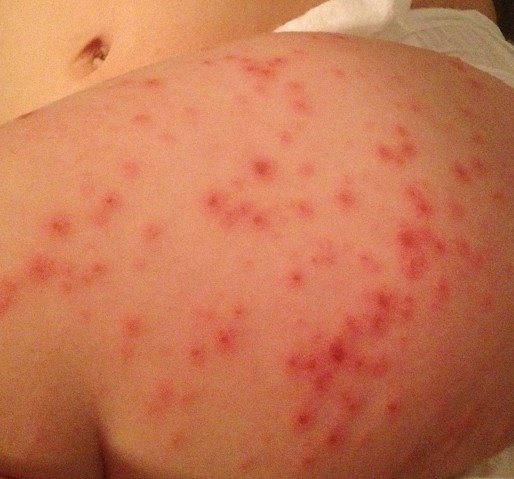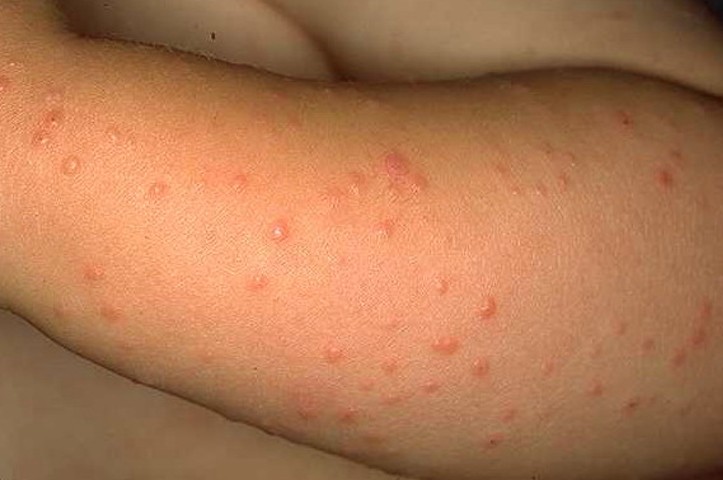Gianotti-Crosti Syndrome
Last reviewed by Dr. Raj MD on January 12th, 2022.
What is Gianotti-Crosti syndrome?
This medical condition is a skin disorder that is associated with viruses, especially the hepatitis virus. It is named after two Italian dermatologists Ferdinando Gianotti and Agostino Crosti in 1955. It is also described as papular acrodermatitis of childhood, papulovesicular acrolocated syndrome, and infantile papular acrodermatitis.
Some of the most common sites for Gianotti-Crosti syndrome to appear are on your buttocks, thighs, arms, and face. It will usually start on your buttocks and spread to the other areas of your body. Your back, palms of your hands and soles of your feet, cheek, and belly are usually spared from developing the bumps associated with Gianotti-Crosti syndrome.
The main group that is affected by this medical condition are children between six months and fifteen years of age with most cases occurring between the ages of one and six years of age. Although the bumps appear suddenly it is considered a self-limited disease which means that the bumps will disappear after a certain time period. It is classified as a “harmless medical condition” but it does have the ability to cause significant harm to your health. Gianotti-Crosti is most often seen in the summer and spring.
Symptoms of Gianotti-Crosti Syndrome
When a person develops Gianotti-Crosti syndrome it usually starts as a firm bump or bumps called papules that appear on your skin and typically appear suddenly. The characteristics of these bumps can include:
- Measuring around one to ten millimeters or point zero four to point thirty-nine inches in diameter.
- Being itchy or pruritic but this is uncommon
- Having a brownish appearance or being the color of your skin
- The bumps start to turn purple which is attributed to your capillaries leaking blood, especially in the ones that are located on your legs.
- The rash having a red color in some cases
- The centers of the lesions may be fluid-filled
- The lesions can come together and form one larger lesion
Sometimes the child may have an enlarged liver or spleen, have a fever, and tender enlarged lymph nodes. They may also have diarrhea. Generally the bumps will remain on your skin for fourteen days to four months.
Causes of Gianotti-Crosti Syndrome
The main cause of developing Gianotti-Crosti syndrome is from getting one of three hepatitis viruses that trigger the three infectious diseases called:
- Hepatitis A
- Hepatitis B which is the one that most commonly causes Gianotti-Crosti syndrome in the parts of the world where the vaccination for hepatitis B is not given
- Hepatitis C
Other viruses that can cause Gianotti-Crosti syndrome include:
- Epstein-Barr virus which is the common reason for the papules developing on your face and for many of the cases in the United States
- Adenovirus
- Enterovirus
- Echovirus
- Human Immunodeficiency Virus (HIV)
There are also other possible causes which can include:
- Infections from bacteria like Mycoplasma and Streptococcus pneumoniae
- Immunizations for diseases like measles, influenza, and polio
How is Gianotti-Crosti Syndrome Diagnosed?
It is not necessary to have any imaging studies or laboratory workups like blood work done to diagnosis Gianotti-Crosti syndrome. Some physicians may order tests to determine if the child’s liver enzymes are elevated to help diagnosis if the cause is from the Epstein-Barr virus infection or hepatitis virus. To rule out other diseases the physician may do a skin biopsy. The physician will do a physical examination and take a detailed medical history.
Treatment
It is rare that you will need any treatment for Gianotti-Crosti syndrome. Any treatment that is done is used to control some of the symptoms that are associated with the disease. If there is itchiness the physician may have you use over-the-counter soothing lotions or oral antihistamines to help reduce the itchiness. If there is an associated condition that develops like strep throat your physician may prescribe antibiotics. If a child exhibits swollen lymph nodes it could take up to three months for them to go back down.
Although treatment is not necessary the physician may use one of these treatments.
- Topical steroids – these would be used to help reduce any inflammation but some feel that they are not really that effective using them for Gianotti-Crosti syndrome
- Zinc Oxide and Calamine lotion – this can help if the child has itchiness with the bumps.
Is Gianotti-Crosti syndrome contagious?
Gianotti-Crosti is a non-contagious medical condition
Pictures
Pictures collection of Gianotti-Crosti syndrome…


